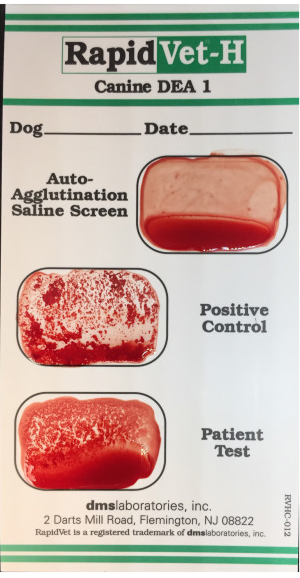Self defense
1/20
There's no tags or description
Looks like no tags are added yet.
Name | Mastery | Learn | Test | Matching | Spaced |
|---|
No study sessions yet.
21 Terms
What is a feature of hypersensitivity reactions?
a. They are elicited in response to harmful pathogens.
b. They consist of a sensitization phase and an effector phase.
c. They can be irritating but are not harmful.
d. There are five different hypersensitivity reactions.
B
Which type of hypersensitivity is mediated by T-cells?
a. Type I
b. Type II
c. Type III
d. Type IV
d. Type IV
In a type I hypersensitivity reaction, plasma cells produce _______ (antibody), which binds to receptors on _______(cells).
a. IgE, eosinophils
b. IgM, mast cells
c. IgE, mast cells
d. IgG, macrophages
c. IgE, mast cells
Which hypersensitivity reactions can directly use complement as an effector mechanism?
a. Type I and Type IV
b. Type II and Type III
c. Type III and Type IV
d. Type I and Type II
b. Type II and Type III
What is an example of type II hypersensitivity?
a. Immune-mediated hemolytic anemia
b. Atopy
c. Arthus reaction (localized vasculitis)
d. Contact dermatitis
a. Immune-mediated hemolytic anemia
What causes the lesions we see in systemic lupus erythematosus (SLE)?
a. Autoantibody-antigen complexes are formed and deposited in vessels causing inflammation and tissue damage.
b. T- and B-lymphocytes are activated against harmless antigens leading to the production of IgE and mast cell degranulation.
c. Cytotoxic T-cells directly kill host cells and T-helper cells produce cytokines causing macrophage activation and inflammation.
d. Antibodies targeting host cells cause direct cell and tissue damage through cell lysis and phagocytosis.
a. Autoantibody-antigen complexes are formed and deposited in vessels causing inflammation and tissue damage.
In leukocyte adhesion deficiency (LAD), leukocytes cannot leave the vasculature to get to sites of infection. Which molecule labeled in the diagram below is abnormal in LAD?
C integrins on the leukocytes
What finding on a CBC would you expect to see in a patient with leukocyte adhesion deficiency? Choose the best answer.
a. Neutrophilia
b. Neutropenia
c. Lymphopenia
d. Erythrocytosis
a. Neutrophilia
Which of the following cells are infected with feline immunodeficiency virus?
a. Neutrophils
b. Eosinophils
c. CD4+ T-cells
d. Endothelial cells
c. CD4+ T-cells
Which patients might have a false positive test result when tested for FIV using an ELISA test?
a. A ten-month-old kitten born to a FIV+ queen
b. A cat recently exposed to the feline immunodeficiency virus
c. A four-month-old kitten born to a FIV+ queen
d. A cat with clinical disease and a positive result on Western Blot (confirmatory test)
c. A four-month-old kitten born to a FIV+ queen
Which of the following patients is most in need of a transfusion?
a. A cat in chronic kidney failure with a hematocrit of 16% who is alert and responsive but slowing down
b. A cat with a hematocrit of 35% due to anemia of chronic disease associated with inflammatory bowel disease
c. A laterally recumbent dog with a hematocrit of 15% due to acute splenic rupture and internal bleeding
d. A dog with iron-deficiency anemia and an anemia of 20% exhibiting mild exercise intolerance but appears stable
c. A laterally recumbent dog with a hematocrit of 15% due to acute splenic rupture and internal bleeding
Which patient most likely has neonatal isoerythrolysis?
a. A mule foal that develops icterus and anemia shortly after nursing
b. A foal born from the first pregnancy of a mare bred to a sire with an incompatible blood type
c. A foal born from the second pregnancy of a mare bred to a sire with an incompatible blood type that does not receive colostrum
d. A mare that gives birth to a foal after being bred to a sire with an incompatible blood type
a. A mule foal that develops icterus and anemia shortly after nursing
True or False: A dog or cat who previously received a transfusion is a suitable blood donor.
false
What is true about blood typing in dogs and cats?
a. Blood typing is not required in either species.
b. Administering a blood transfusion to a cat without performing blood typing can lead to severe transfusion reactions.
c. Blood typing before the first transfusion is extremely important in dogs because they have naturally occurring alloantibodies against other blood types.
d. Blood typing in cats will help distinguish Mik+ cats from Mik- cats.
b. Administering a blood transfusion to a cat without performing blood typing can lead to severe transfusion reactions.

How would you interpret the following blood typing card?
a. The patient is DEA 1.1 positive.
b. The patient is DEA 1.1 negative.
c. The patient is auto-agglutinating.
d. The test is invalid.
a. The patient is DEA 1.1 positive
What is the definition of a major crossmatch?
a. Mixing the recipient’s plasma with the donor’s red blood cells to determine compatibility
b. Mixing the donor’s plasma with the recipient’s red blood cells to determine compatibility
c. A method of determining patient blood type of the recipient
Mixing the recipient’s plasma with the donor’s red blood cells to determine compatibility
Which antibody is most responsible for the formation of agglutination?
a. IgG
b. IgE
c. IgM
d. IgA
c. IgM
When performing a crossmatch, what are we looking for to indicate an incompatible donor and recipient?
a. Spherocytes and ghost cells
b. Hemolysis and agglutination
c. Agglutination and Heinz bodies
d. Rouleaux and hemolysis
b. Hemolysis and agglutination
In which condition would cryoprecipitate be indicated?
a. Anticoagulant rodenticide toxicity
b. Liver disease
c. Hemophilia A
d. Acute blood loss
c. Hemophilia A
What is the most common transfusion reaction seen?
a. Disseminated Intravascular Coagulation (DIC)
b. Hemolysis
c. Respiratory signs
d. Fever
d. Fever